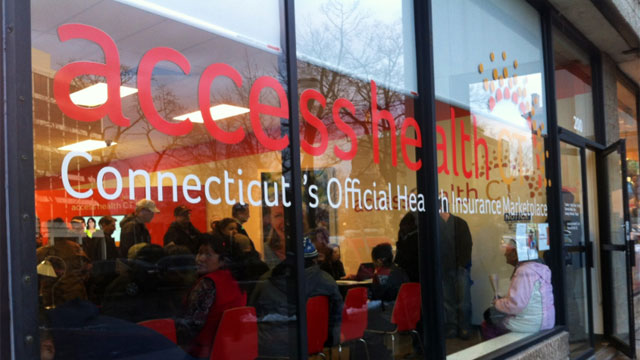Access Health CT happy with enrollment figures, but sees room for improvement
Although it has been battered by any number of challenges since it was created in 2011, Access Health CT remains unbowed.
“We had to fight a lot of misconceptions for a lot of folks this year,” said AHCT Director of Marketing Andrea Ravitz. “This year”™s open enrollment period presented us with a lot of issues that we”™d never seen in the past.”
Those issues included the federal government”™s elimination of the penalty for not having health insurance, and the December ruling by a federal judge in Texas that the Affordable Care Act”™s individual coverage mandate was unconstitutional.
Both factors played a role in AHCT”™s diminished enrollment numbers this year. The open enrollment period, which ran from Nov. 1, 2018, to Jan. 15, netted 111,066 Connecticut residents, which was 3,068 fewer than last year. Of those, 80,812 renewed their plans while 30,254 were new customers.
 In addition, there were 14,981 customers who did not renew their coverage this year. Of those, 31 percent transitioned to the HUSKY Health program, 9 percent aged out due to qualifying for Medicare, 14 percent did not actively renew and 46 percent canceled their plans.
In addition, there were 14,981 customers who did not renew their coverage this year. Of those, 31 percent transitioned to the HUSKY Health program, 9 percent aged out due to qualifying for Medicare, 14 percent did not actively renew and 46 percent canceled their plans.
Ravitz said AHCT”™s staff was faced with questions about the Texas ruling, which did not apply to the 2018-19 coverage year.
“There was a huge amount of confusion and misinformation out there,” she said, noting that the Texas decision is being appealed and that the ACA remains in place.
AHCT extended its enrollment period by 30 days to Jan. 15 within hours of that ruling, Ravitz said. “We were very pleased at the way we overcame those challenges,” she said.
The “we” includes James Michel, who was elevated to the agency”™s CEO post in September following Jim Wadleigh”™s resignation from that position in April.
Michel noted that the state”™s strong economy and low unemployment were factors in the lower enrollment numbers, explaining that employees often get insurance through their employer.
There were significant plan-design changes this year, with the total number of plans offered by Anthem Blue Cross & Blue Shield and ConnectiCare reduced from 20 to 17. AHCT predicted that because of changes to plan designs, about 52 percent of renewing households would see a premium increase of an average of $100 extra per month. According to its data, 28 percent of renewals ended up paying a net premium increase of $100 or more, while about 36 percent of renewing households will pay a premium that”™s less than what they paid in 2018.
The exchange said about 44 percent of renewing customers changed plans during the latest open-enrollment period, compared with 18 percent the prior year.
Ravitz said the elimination of the penalty “didn”™t have much impact” on enrollment, according to AHCT”™s market research.
AHCT”™s introduction of a comparison tool on its website, which allowed individuals to see plans that included such factors as their doctors and prescriptions, was a great success with over 25,000 people using it, Ravitz said.
“There are always ways to improve,” Ravitz said. “Based on the feedback we received from our customers, there are some things we need to work on to make the experience better, including making the application process more simple. And we need to keep up with all that”™s happening with mobile that makes transactions much easier. We want to make enrollment as simple as doing a bank transaction.”